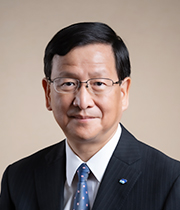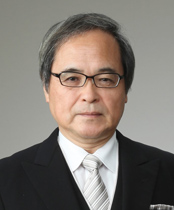Effective March 31, 2022, I have resigned from my position as President of NIMS after serving for six years and three months. Although I had one year left in my contract, I decided to resign at this time in the belief that the next medium-to-long-term (MTLT) plan starting in FY2023 should be implemented under the direction of a new president. I greatly appreciate the support I have received from NIMS and others during my tenure.
The mission of a national research and development agency is to contribute to society by achieving significant research results. To this end, I encouraged NIMS researchers to enhance their research capabilities both at the individual and team levels. They have responded positively to my expectations and produced tangible results.
For example, the number of research papers published—a research capability indicator—has increased from 1,222 in FY2015, immediately before the implementation of the current MTLT plan, to 1,564 in FY2021 as of March 31, 2022. In addition, in terms of the number of citations per paper—another research capability indicator—NIMS has substantially surpassed Japan’s universities and other national research and development agencies and is now neck-and-neck with world-class research universities overseas, including the University of Cambridge, the California Institute of Technology and the Massachusetts Institute of Technology.
With respect to NIMS’ organizational efforts, it has been selected as a central hub for several major national projects related to rechargeable batteries, liquid hydrogen, materials informatics and other technologies, building a reputation as a key player in Japanese materials research. In addition, we have been leveraging our team research capabilities in large-scale joint research with other organizations. In these research projects, we always keep our greater goal in mind: improving Japan’s overall research capabilities. For example, we have made huge labor and financial investments in our efforts to develop materials data platforms with the goal of making them available to the entire academic sector. During this project, we negotiated with the Japanese government, driving MEXT (the Ministry of Education, Culture, Sports, Science and Technology) to launch a new project in FY2021 to develop advanced materials research infrastructure across Japan.
NIMS has also worked to help boost Japan’s industrial competitiveness. For example, we have created Materials Open Platforms (MOPs): an industry-specific collaboration framework to encourage rival private companies to jointly conduct basic research to achieve common goals, with NIMS mediating their collaboration. MOPs are currently in operation for the chemical, all-solid-state battery, pharmaceutical and magnet industries. I believe that these efforts have been effective in strengthening the international competitiveness of Japanese industry because most domestic manufacturers are small relative to their counterparts overseas. I look forward to further developments in the MOP project.
Finally, the research environment at NIMS has significantly improved during the current MTLT plan period thanks to support from MEXT and the financial authorities. The quality of our research equipment is undoubtedly top notch among materials research organizations around the world. I hope that NIMS will leverage this advantage to make great advances in the future. We appreciate your continued support of NIMS, which is dedicated to working hard for the public.


